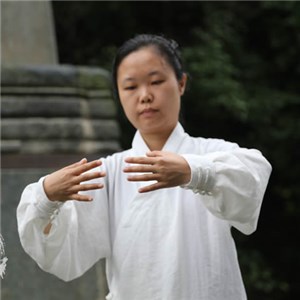Industrial Supplies Agents
Description
Qigong comprises a diverse set of practices that coordinate body (調身), breath (調息), and mind (調心) based on Chinese philosophy. Practices include moving and still meditation, massage, chanting, sound meditation, and non-contact treatments, performed in a broad array of body postures. Qigong is commonly classified into two foundational categories: 1) dynamic or active qigong (dong gong), with slow flowing movement; and 2) meditative or passive qigong (jing gong), with still positions and inner movement of the breath. From a therapeutic perspective, qigong can be classified into two systems: 1) internal qigong, which focuses on self-care and self-cultivation, and; 2) external qigong, which involves treatment by a therapist who directs or transmits qi.?As moving meditation, qigong practice typically coordinates slow stylized movement, deep diaphragmatic breathing, and calm mental focus, with visualization of guiding qi through the body. While implementation details vary, generally qigong forms can be characterized as a mix of four types of practice: dynamic, static, meditative, and activities requiring external aids.Dynamic practiceinvolves fluid movement, usually carefully choreographed, coordinated with breath and awareness. Examples include the slow stylized movements of T& acute;ai chi ch& acute;uan, Baguazhang, and Xing yi. Other examples include graceful movement that mimics the motion of animals in Five Animals (Wu Qin Xi qigong),[29] White Crane, and Wild Goose (Dayan) Qigong. As a form of gentle exercise, qigong is composed of movements that are typically repeated, strengthening and stretching the body, increasing fluid movement (blood, synovial, and lymph), enhancing balance and proprioception, and improving the awareness of how the body moves through space.?Static practiceinvolves holding postures for sustained periods of time. In some cases this bears resemblance to the practice of Yoga and its continuation in the Buddhist tradition. For example Yiquan, a Chinese martial
Chikung Practice, Chikung,Read More
Kunlun International Martial Arts Academy
Key Word
Address: Yulindian, Muping District, Yantai City, Shandong Province, China,
Yantai, Shandong
China, 264111
Tel: 86-535-4622266
Fax: 86-535-4622266


